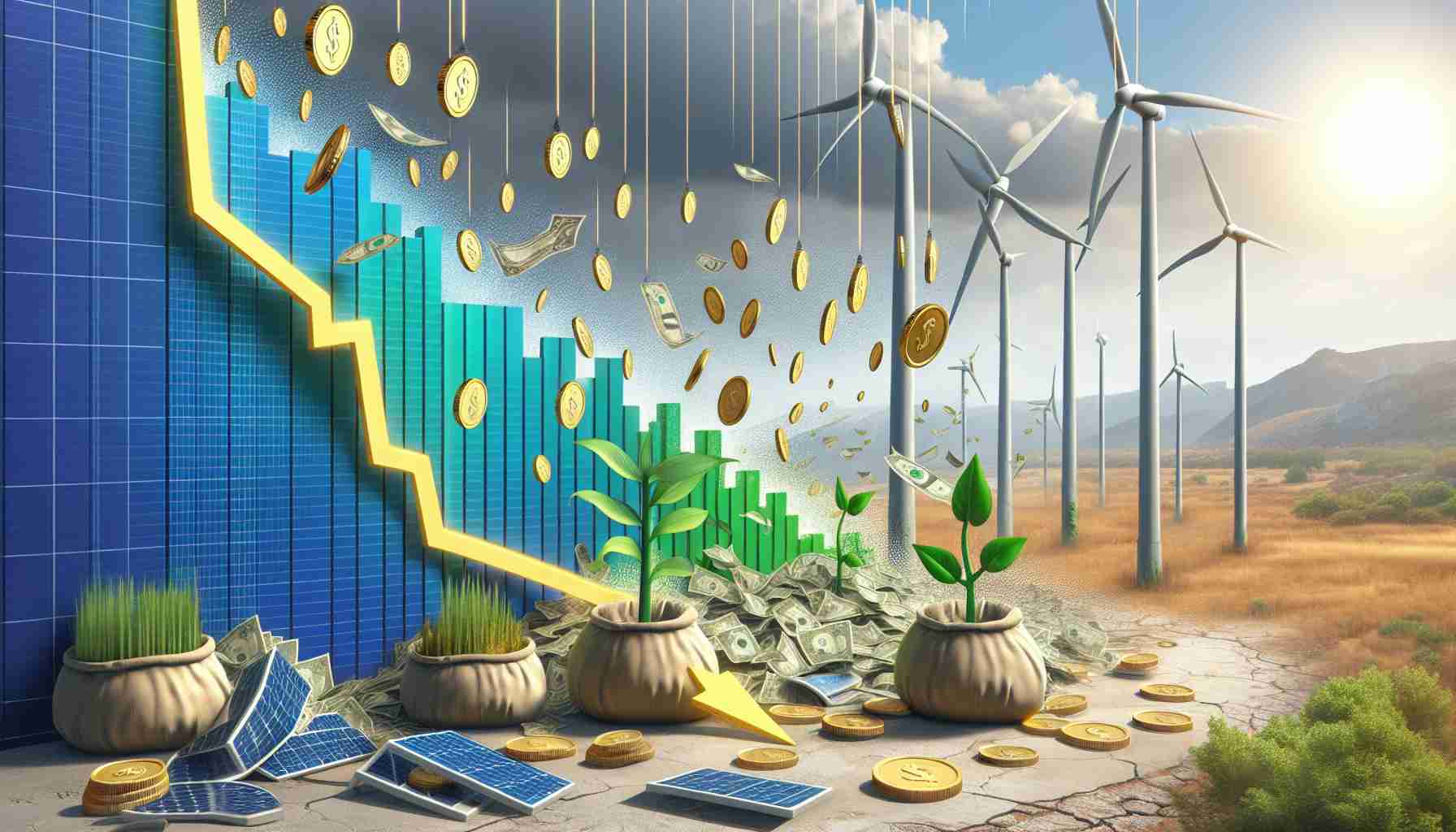Investors are hitting the brakes on climate-focused mutual funds in 2024, retracting around $30 billion, a stunning reversal after years of growth. This unprecedented trend signifies a dramatic shift in the investment landscape, prompted by challenging economic conditions and political turmoil surrounding socially responsible investing.
After reaching a zenith in assets under management—a staggering $541 billion—the total plummeted to $533 billion last year for the first time since 2019. The steep decline came as withdrawals piled up, overshadowing any positive market performance. Global sales of these funds drastically shrank, plummeting from $151 billion in 2021 to redemptions of $29 billion.
Despite escalating urgency for private sector investment to combat climate change, recent political shifts have sowed doubt in green investment opportunities. The political environment’s instability, particularly the rhetoric from leaders opposing climate initiatives, has created hesitation among potential investors.
While low-carbon funds managed to outperform the broader market, funds focused directly on clean energy faced notable losses, reflecting broader market challenges. Economic pressures and rising interest rates have made capital-heavy projects less appealing, causing many climate-focused firms to struggle.
In a silver lining, institutional investors, especially pension funds, continue their support, signaling that there’s still hope for climate finance. As the world gears up to invest significantly in climate solutions, the aim remains clear: despite these hurdles, the push for sustainable finance persists.
The Shifting Landscape of Sustainable Finance
The recent earthquake in the realm of climate-focused mutual funds has all but shaken the very foundation upon which sustainable investing was built. With a staggering $30 billion in withdrawals, the implications ripple across not just financial markets, but society and culture as a whole. A dramatic retreat from green investments reflects a growing skepticism that could stymie global efforts to transition toward a more sustainable economy.
At the societal level, investors’ retreat could undermine progress in the crucial battle against climate change. With nearly $6 trillion required annually to meet carbon neutrality goals, the reduced willingness of funds to channel resources into innovative green technologies signals a potential setback. This could adversely affect job creation and advancements in sectors crucial for a sustainable future, like renewable energy and electric vehicles.
On an environmental front, the diminished capital inflow into climate solutions could lead to stagnation in vital projects aimed at reducing greenhouse gas emissions and promoting sustainable practices. As interest rates rise and economic uncertainty looms, investment in clean energy may dwindle at a time when it’s needed most.
Looking ahead, the future of sustainable finance appears contingent on political stability and a cohesive strategy from investors. Long-term significance lies in institutional investor behavior—if pension funds and other large entities continue to back climate initiatives, a path may emerge for recovery. A reestablishment of faith in green investment could ultimately pivot these setbacks into renewed momentum, fostering a culture of resilience in facing transformative climate challenges.
Investors Pull Back: The Surprising Decline in Climate-Focused Funds
An Overview of the Current Climate Investment Landscape
In 2024, a striking trend has emerged as investors retreat from climate-focused mutual funds, retracting approximately $30 billion from the market. This marks a significant downturn following years of growth in the sector. With total assets under management decreasing from a peak of $541 billion to $533 billion, the latest figures reveal the first overall decline since 2019. The escalating political and economic pressures have drastically transformed the landscape of socially responsible investing.
The Diminishing Sales of Climate Funds
Recent analyses pinpoint a substantial drop in global sales of climate-focused funds, which plummeted from $151 billion in 2021 to a staggering $29 billion in 2024 due to widespread redemptions. This decline signifies more than just asset fluctuation; it hints at a shift in investor sentiment towards sustainable investments. As doubts rise concerning the viability of climate initiatives, many funds are seeing withdrawals overshadow any gains achieved through market performance.
Economic and Political Factors at Play
Rising interest rates and economic pressures have made capital-intensive climate projects less appealing, contributing to the struggles of many climate-focused firms. Compounding these financial challenges is a politically charged environment that has cast doubt on green investment opportunities. Some political leaders have publicly opposed climate initiatives, causing a chilling effect on potential investments in the sector.
Moreover, while funds targeting low-carbon investments have shown resilience by outperforming the broader market, those emphasizing clean energy have recorded significant losses. This divergence raises questions about the long-term viability of distinct investment strategies within the climate finance sector.
Institutions Remain Committed Amidst Market Turmoil
Despite the recent downturn, there remains a glimmer of hope as institutional investors—particularly pension funds—continue to bolster climate finance. Their sustained interest signals that the push for sustainable finance is far from over. As the world emphasizes the necessity for private sector participation in combatting climate change, the ongoing support from institutional players may play a critical role in stabilizing and nurturing the market.
Future Insights and Trends in Climate Investing
Looking ahead, it is essential to consider several predictions and trends that might shape the future of climate-focused investments:
– Regulatory Changes: Expected shifts in government policies could either bolster or further inhibit investments in climate initiatives. Adaptive regulations may encourage more extensive private sector involvement.
– Technological Innovation: With advancements in clean technologies, investment opportunities may emerge that offer clearer returns and appeal to investors still committed to economic viability.
– Consumer Demand: An increasing consumer preference for sustainable products and services can drive market growth, leading companies to prioritize sustainability in their operations and marketing.
Conclusion: Navigating the Future of Climate Finance
While the current downturn in climate-focused mutual funds is alarming, the eagerness of institutional investors points to potential recovery for climate finance. As economic pressures and political uncertainties loom, the call for sustainable investing remains more urgent than ever. Stakeholders will need to navigate these turbulent waters, balancing financial returns with the pressing need for climate action.
For more insights on sustainable investing and related resources, visit Investopedia.













